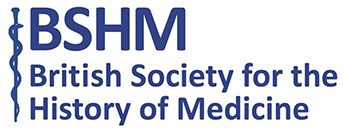
Former RCP treasurer, Dr John Bennett, taken in 1958 when he was a junior doctor and suffering from glandular fever (he looks very cheerful on it!).
Forty-five life story oral history interviews with members and fellows of the Royal College of Physicians of London are now accessible remotely through the RCP Library Catalogue. Researchers can access the recordings plus a full transcript or detailed summary by following the link below.
The recordings cover a wide variety of topics, including medical education, working life in the NHS, diagnostics, treatments and drug therapies in a variety of medical specialties, and the enormous changes seen in both the practice and management of medicine since the end of WWII. While inevitably we have interviewed RCP presidents, treasurers and registrars the collection also contains many stories of physicians who have had only minimal contact with the college but have done important work in district general hospitals throughout the UK.
Oral history is a particularly useful historical source for exploring how individuals experienced certain events or changes, and this is certainly true of the RCP collection. Interviewees talk of the exhaustion, fear and excitement of their time as house officers, of the wonder and trepidation of using new drugs for the first time, and of patients they will never forget. We have heard stories of physicians carrying out dangerous experiments on themselves and their colleagues and the feelings in the profession at the introduction of ethics committees. Interviewees have also shared their thoughts and experiences of the introduction of different government policies, the change from the firm to the shift system, the impact of Modernising Medical Careers and the impact of the NHS Internal Market System.
My favourite extracts from the collection are;
Dr Norman Jones reflecting back on setting up the first renal dialysis unit at St. Thomas’ Hospital,
Sir Colin Berry on the changes in doctor / patient communication during his career,
and a short compilation with Dr Virginia Camp, Professor Christine Lee and Professor Clare Fowler talking about their experiences of applying for medical school.
For more information on the collection please contact Sarah Lowry: sarah.lowry@rcplondon.ac.uk
To access the interviews go to: http://rcp.soutron.net/Portal/Default/en-GB/Search/SimpleSearch and click on <<Oral History: Voices of Medicine>> under <<Key Collections>>.
Sarah Lowry
RCP London

